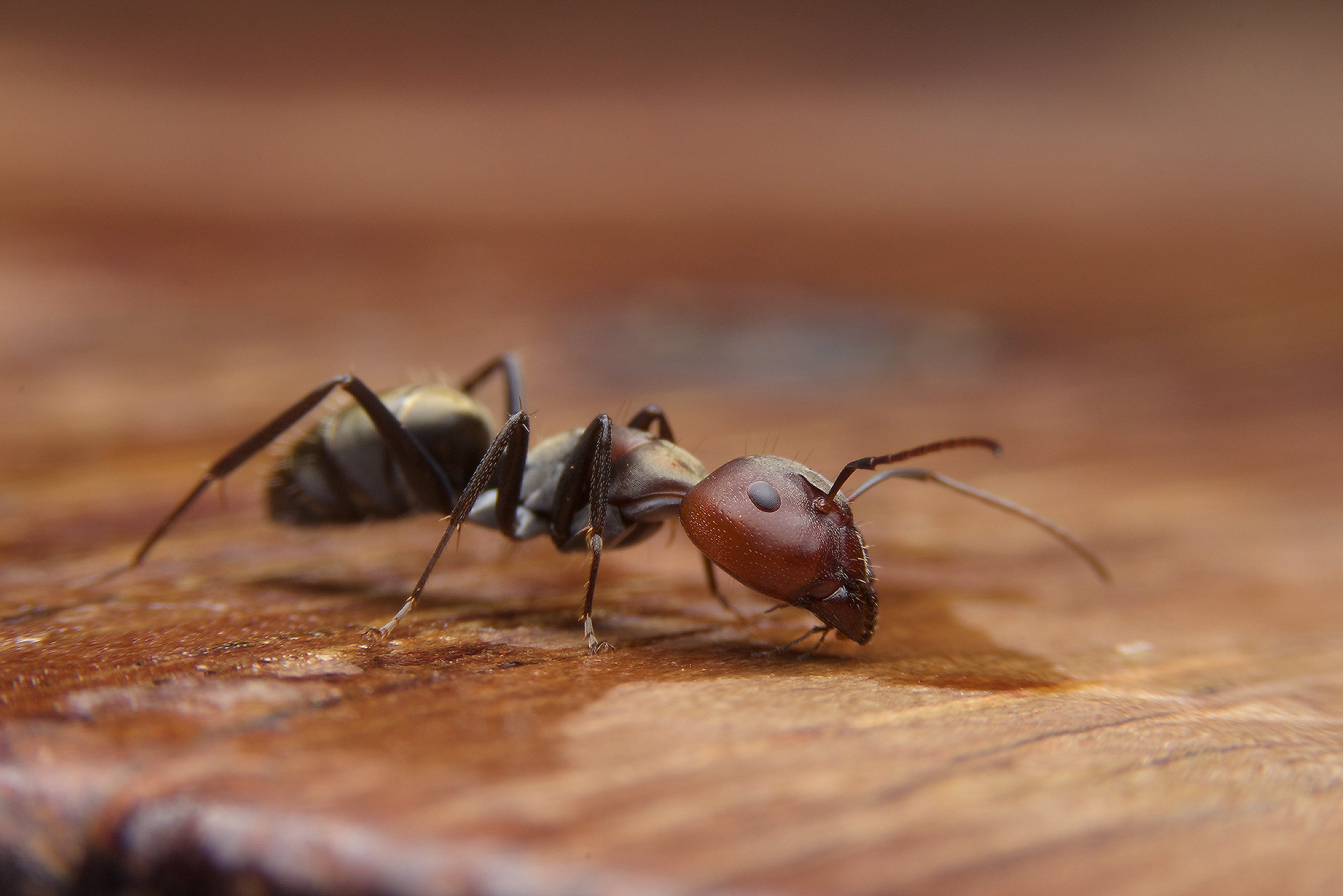Those Big Ants in Your House and Yard Might Be Carpenter Ants! What to Look for and What to Do

Ants come in many different sizes. Some are borderline microscopic, some are as big as an inch and a half long. That said, the biggest ant in one part of the world might be a different species than the biggest ant in another. In the mid-Atlantic states, including New Jersey, Pennsylvania, Delaware, and Maryland, the most notorious big ant is the carpenter ant, and while it might not be the most threatening of big ants, it can be the most damaging to your home and wallet.
Ants are rarely welcome guests in peoples’ homes, but those big, wood-shredding carpenter ants should be evicted extra-quickly. In their natural environment, Carpenter Ants can be helpful creatures. They break down dead wood from injured and dead trees and put them to more productive use, enriching soil and allowing new life to grow. Unfortunately, most homes are built out of dead wood, which makes carpenter ants anything but helpful during an infestation. The damage they do can be extensive, expensive and is generally not covered by homeowners’ insurance.
So how do you know if the big ants you’re seeing in your home are carpenter ants? Not all big ants in our area are carpenter ants are big, but very few non-Carpenter species are likely to enter your house. Carpenter ants like houses more than the average ant by quite a lot. Second sign that you have a carpenter ant is the presence of frass- the piles of accumulated chewed up wood that can look like a pile of saw dust. You should also check the trees in your yard. Carpenter ants are often found climbing up and account trees, especially trees that are injured or dead as they build their homes into lifeless wood. If there are Carpenter Ants in your yard, they have an excellent chance of finding their way over to your home.
Carpenter ants, like most creatures, prefer the easy route when it comes to building their homes. Instead of working harder than necessary, they look for soft, damaged wood that’s already started to break down—like a tree that’s been weakened by water. The moisture makes the wood easier to carve out and provides the perfect humid environment for their colony to thrive.
Unfortunately, the same thing happens in homes. Areas with water damage—like doorframes, window frames, porch columns, and roof decking—become prime real estate for carpenter ants. They’re also drawn to dark, hidden spaces with little airflow, making certain parts of your home an ideal spot for them to settle in.
Most infestations actually start outside, often in trees that have been quietly housing carpenter ants for years. But as space in the tree gets tight, they expand, forming satellite colonies—sometimes inside homes. In many cases, homeowners don’t even realize there’s a problem until the ants have already moved in.
That’s why keeping an eye on the trees in your yard is so important! Catching an infestation early can save you from the much bigger (and more expensive) headache of dealing with carpenter ants inside your home later on.
Dealing with a carpenter ant infestation? This is definitely a job best left to the pros. These ants can nest in so many different places that trying to find and eliminate them all on your own can feel like an impossible task.
Pest control experts have specialized tools to tackle the problem effectively. They use dust applicators to reach deep into hidden voids, ultra-low volume machines to inject pesticide into tiny gaps, and even tools like drills and moisture meters to track down hard-to-find nests. And here’s the kicker—there’s often more than one nest in a single home!
If the ants are coming from outside, treatments like residual sprays around the foundation can help keep them from getting in. But if their main colony is in a tree nearby, just spraying your home’s exterior might only buy you some time before they find another way inside.
Bottom line? If you’re dealing with carpenter ants, bringing in a professional can save you a lot of time, frustration, and potential damage in the long run.











